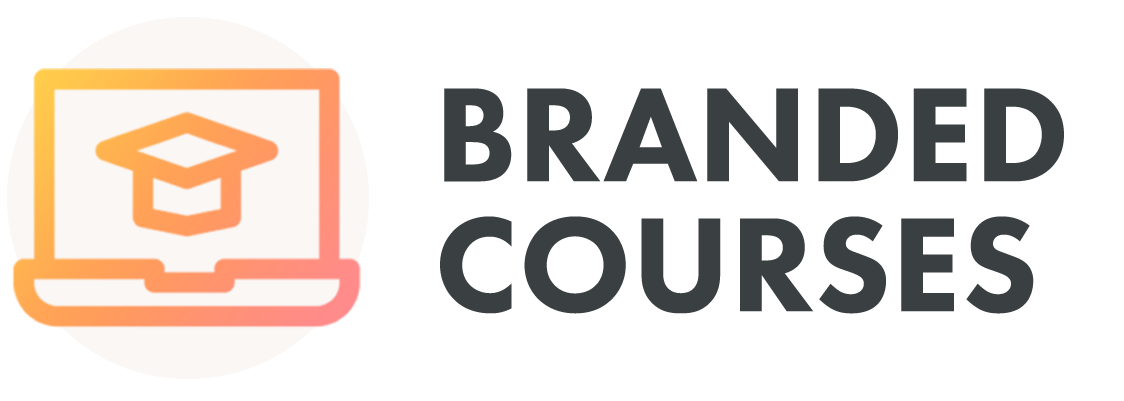You will want to have a clear structure to your content so that you have a clear roadmap for when you go to record your course and create your content. This guide gives you the top 5 things to think about when designing your course.
1. Focus on your Customer not your Course
People are buying your course because they are looking for an outcome of some sort from spending their time or money with you. Ask yourself these simple questions.
1. What are the key learning outcomes for this course?
2. What transformation do they want to experience as a result of your course? (knowledge /
confidence / certification)
3. Who would benefit most from a course like this? (i.e. ideal customer)
2. Create a Framework – Put up your Scaffolding
There are a couple of different options that you can have in terms of how you structure your course. You want to take your customer through a step by step journey where each lesson builds on the previous one and has some sort of logical sequence to the end.
Below are three options you can work with:
1. Step by Step Course
2. Week by Week Course
3. Reference Course
Step by Step is the most common of format as you are taking the students on a journey from point A to point B. It generally moves from an introduction of the topic overall and then brings you through the core information that you need to know to have some level of expertise on the subject e.g. SEO Trainer Certification.
Week by week courses may have the same content but are designed to be distilled over a period rather than consumed in one sitting. This is a good option when you want to give people a learning experience and time to imbed the learning over a period of time e.g. Building Resilience in the Workplace
Reference Courses do not build on content from one module to the next but are rather a collection of individual pieces of knowledge that the user can learn in any sequence they wish. It is information gathered in one place so that the user knows that they have all the knowledge they need on a particular topic area that they need.
3. Build the Structure – Create the Home for Your Content
Now that you know what the framework is over all then you can start to name out your Modules and Lessons. Modules are the overall topic area that you are covering, and lessons are the individual learning sessions you deliver to your customers. Below is an example of this:
Course: Start Your Own Business
Module 1: Finding Your Genius Idea
Lesson 1: Idea Generation Techniques
Lesson 2: Choosing an Idea – how to know the good from the bad
Lesson 3: Assessing the Golden Goose opportunity
Module 2: Writing a Brilliant Business Plan
Lesson 1: What is it?
Lesson 2: Mastering Market Research to feed your plan
Lesson 3: Common mistakes made in writing a business plan
Module 3: Marketing Your Business like a Superstar
Lesson 1: Finding your target audience
Lesson 2: Creating an Inspiring and Compelling Message
Lesson 3: Budgeting and Planning a Marketing Plan that rocks!
Module 4: Finances and Funding
Lesson 1: How to get money to fund your business idea
Lesson 2: How to become a financial wizard for your business
Lesson 3: Building a Wealth War Chest in Your Business
Module 5: Mindset of an Entrepreneur
Lesson 1: Resilience and other qualities you need to cultivate
Lesson 2: Insights from the Masters – 5 tales from battle worn Entrepreneurs
Lesson 3: Tips for Success
4. Having Key Learning Points
Have a clear learning point for each lesson that you produce. People need to have a couple of key takeaways from every interaction with you so you have to have it clear in your mind what those points are.
5. Include Additional Resources
You can really help make your course content sing with additional resources that people can access.
It could be a list of equipment or resources for people to use during the course. It could be a series of worksheets that people use throughout the course. It could be some additional short bonus videos on a related topic of relevance to the course e.g. Start-Up Marketing Plan Template
So, hopefully this gives you a better sense on how you might structure your course.
What are your next steps?
Get a big sheet of paper and put it on the wall
Step 1: Brainstorm your course ideas
Step 2: Write down the key learning points from your course on post its and stick them up
Step 3: Organise your post-its into groups (these will become your modules)
Step 4: Arrange them into a logical order (these will become your lesson order)
Step 5: Write out a draft course outline
Step 6: Finalise your course outline and start recording!
ABOUT US
At BrandedCourses.ie we are passionate about bringing your content to life online! You build the content and we create a bespoke branded platform for you.
For any questions, book a call with us: https://brandedcourses.ie/marketingcoach/register-
branded-courses/





